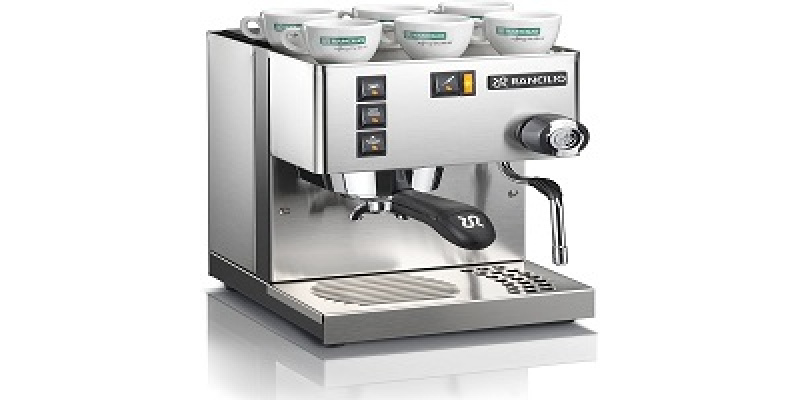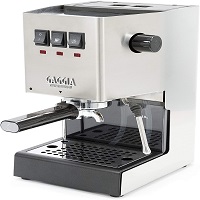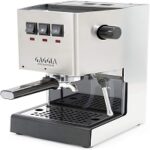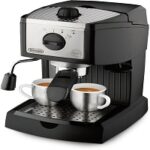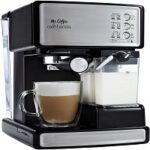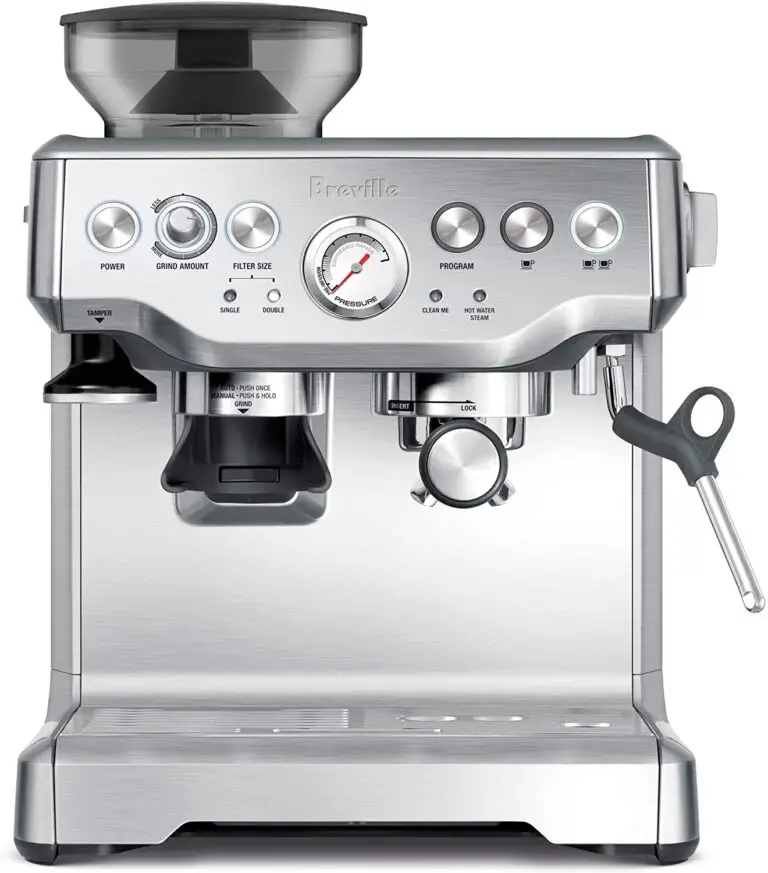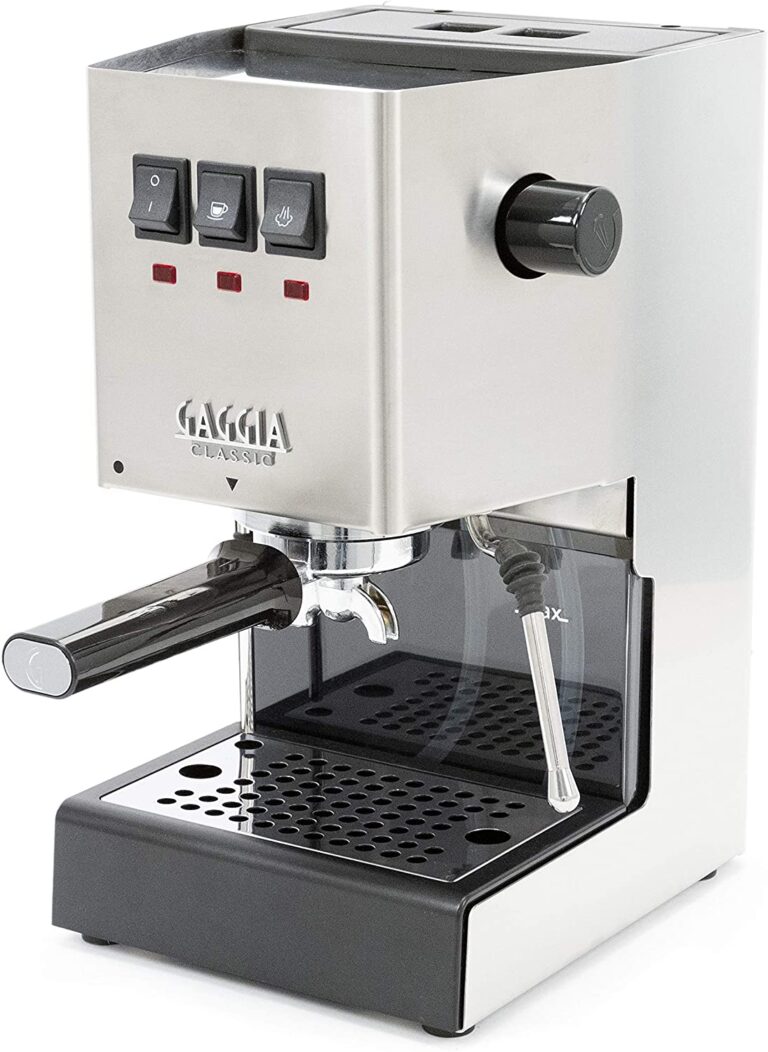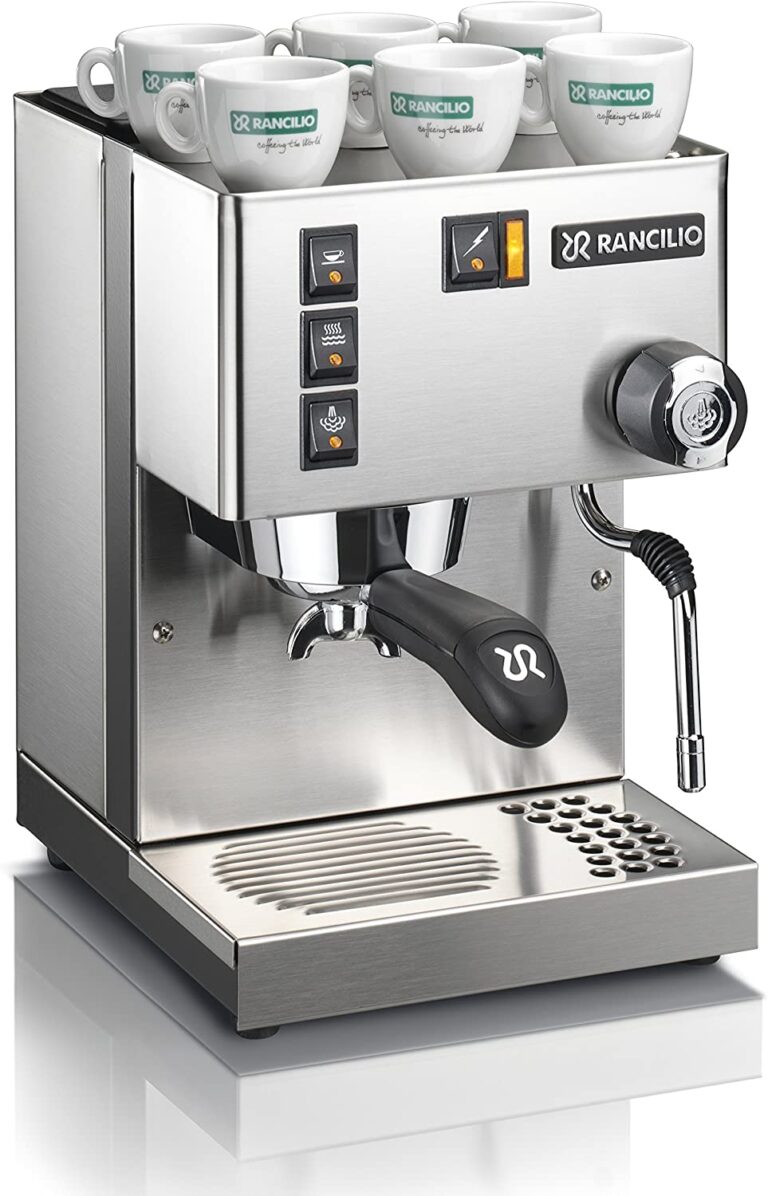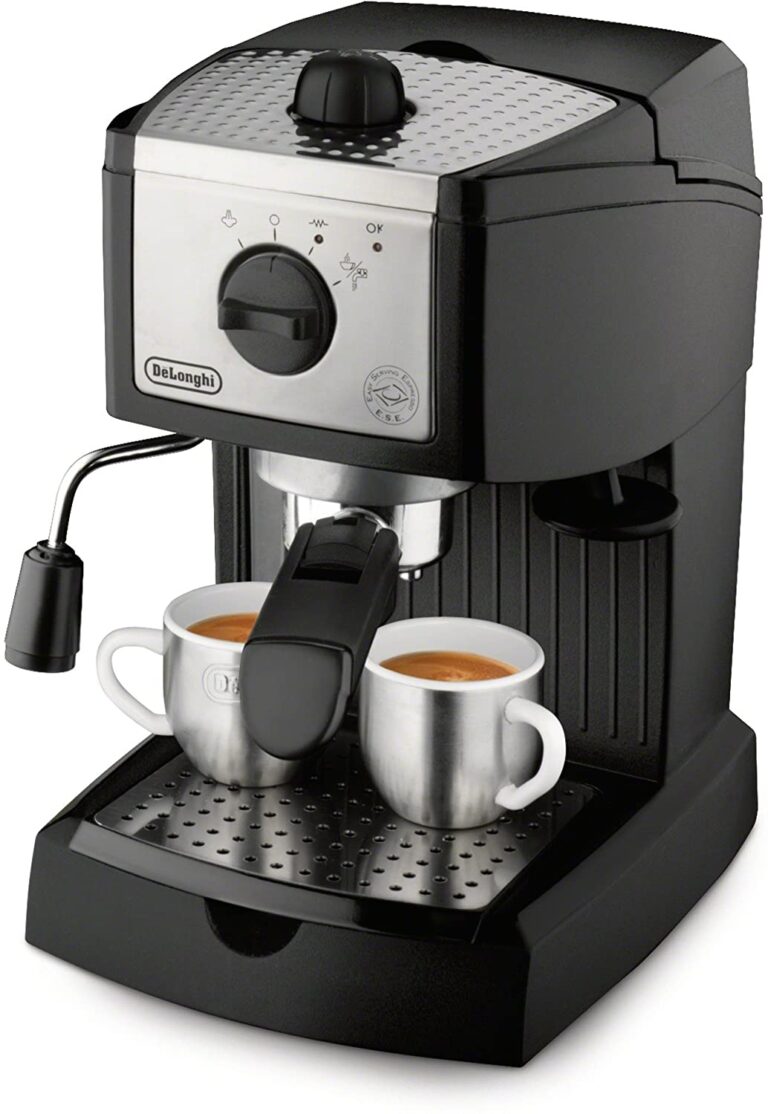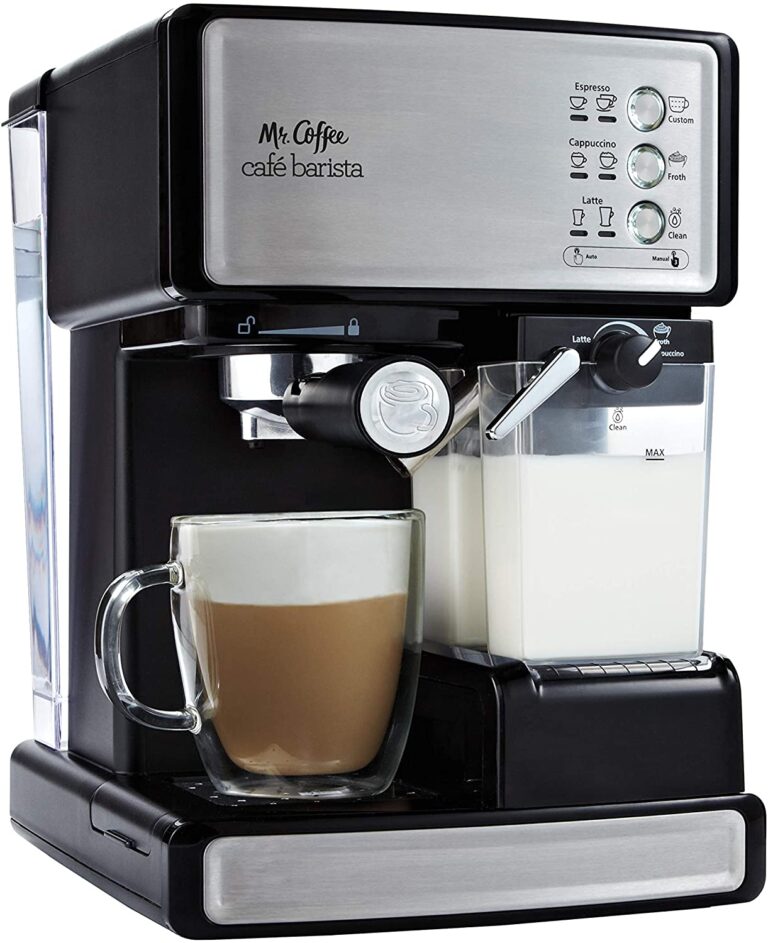Best Espresso Machines for Home Use
Are you looking for the top-rated espresso machine to make you that perfect cup of espresso? Wondering how to pick the right machine from the many options available? Fortunately for you, now there’s a big number of quality and affordable espresso machines that will get you very high-quality espresso shots from the comfort of your home. In this review, we’ll show you our top choices of espresso machines for home use that fits your budget and your style!
Qualities You Should Look For In Espresso Machines?
A good and high-quality espresso cup depends on many factors including the temperature of the brew, the fineness of the grind, the pressure of tamping, and the pressure needed to extract the coffee. It’s recommended to look for an espresso machine that creates pressure between 15-18 bars. Always look for an espresso machine that gives consistent and reliable heating.
Other factors to be aware of are:
- Easy of Use
- Ease of Cleaning
- The cost of the machine
- Your Drink Preferences
- Durability
- Size of the machine for your space
What Type of Espresso Machine Should You Purchase?
The first thing is you gotta decide on the type of espresso machine that will best fit your personal needs. Then you’ll be one step closer to making that perfect cup of espresso.
There are different types of espresso machines out there: manual, semi-automatic, fully automatic, portable, pod, and commercial espresso machines.
Manual Espresso Machines
The first espresso machine was originally introduced in 1905. Manual espresso machines require more level of skill but the reward it’s amazing on producing the perfect espresso shots. You are gonna be in control of everything from frothing, grinding to pushing in order to get the espresso shot.
Semi-Automatic Espresso Machines
Semi-automatic espresso machines are also more hands-on to making espresso shots but you don’t control every step of the process in making the espresso. You are in control of how much coffee to put on the filter and you’re also in control of the right pressure, stop or start the pump to control the water. Semi-automatic espresso machines are also the best ones for home use.
Fully Automatic Espresso Machines
These are one-touch operation machines also known as super-automatic espresso machines. They let you set the preferences on milk frothing and coffee strength you want and you can also program to have drinks for later without problem. For those who have a more dynamic life and don’t have a lot of time, these machines are usually a great choice. However, the quality of espresso shots is no match compared to manual and semi-automatic machines still they are great to make quick coffee drinks without losing a lot of the quality of the espresso shots.
Portable Espresso Machines
Portable espresso machines are great for people with limited spaces since they are more compact and don’t take to much space. Most of them don’t need electricity which makes them very portable. However, the quality of espresso shots may vary so you gotta do more research on choosing the right one for you.
Pod Espresso Machines
Pod espresso machines while very convenient they make very low-quality espresso shots in my opinion. The most used pod machines are from the Nespresso brand. Usually very cheap but over time pod machines can be more expensive than other machines.
Commercial Espresso Machines
These espresso machines are mostly used by coffee shops and restaurants. They are not ideal for home use since they take to much space and they are very expensive.
COMPARISON TABLE OF ESPRESSO MACHINES
Breville BES870XL Barista Espresso Machine
- Semi-Automatic
- Dimensions: 13.7″ x 11.5″ x 13.2″
- Capacity: 61 oz.
Rancilio Silvia Espresso Machine
- Semi-Automatic
- Dimensions: 9.2″ x 11.4″ x 13.3″
- Capacity: 1.8-liter reservoir. 0.3-liter boiler
- Semi-Automatic
- Dimensions: 9.5″ x 8″ x 14.2″
- Capacity: 42 oz.
- Semi-Automatic
- Dimensions: 8 x 10 x 11
- Capacity: 35 oz.
- Semi-Automatic
- Dimensions: 12.6″ x 8.9″ x 11.2″
- Capacity: 1.7 liter, 0.5 liter (milk tank)
5 Best Espresso Machines for Home Use
Now without waiting any longer, let’s help you find the best espresso machine for home use that will make you that perfect espresso shot:
1. Breville BES870XL Barista Express Espresso Machine
Specifications:
- Semi-Automatic with Grinder
- Dimensions: 13.25″ x 12.5″ x 15.75″
- Capacity: 2 liters
- Pressure: 15 bar
Breville is one of the top brand names in the coffee field that makes excellent espresso machines. With this espresso machine, you get an all-inclusive machine with a steaming wand, burr grinder, big removable water reservoir, dual wall filters, and one and two cups single shot. Also, it’s one of the easiest machines to clean after each use making this espresso machine an excellent buy for your home to make that perfect cup of an espresso shot.
It’s also one of the best-sellers with raving reviews all over the internet. With the integrated steaming wand you can make different kinds of coffees like lattes and cappuccinos thanks to its capabilities to create the perfect micro-foam so go ahead and get creative with this espresso machine when you’re making your morning java.
Pros
- Very good machine and consistent for different skill levels
- Ability to quickly switch between brewing and steaming
- Customized settings or presets
- Stainless steel steaming pitcher
- Sleek design comes in three different colors
- Built-in Grinder
Cons
- A bit expensive
Specifications:
- Semi-Automatic
- Dimensions: 9.5″ x 8″ x 14.2″
- Capacity: 42 oz.
- Pressure: 15 bar
- Panarello Steam Wand
The Gaggia Classic Pro it’s an updated version of its older version of Gaggia Classic and it’s great for entry-level espresso makers. It gives you total control over making the espresso. The portafilter of Gaggia Classic pro comes with a variety of filter baskets one for ground coffee and the other designed also for ESE pods.
Getting that amazing espresso with the perfect crema is easy with Gaggia Classic Pro, all you gotta do is fill the basket and start-stop the pump. Better yet start learning the finesse of making the espresso with the pro non-pressurized basket.
The updated commercial steam wand will give full control to milk frothing with its power that is able to produce velvety, rich milk foam which is perfect for latte art enthusiasts. Its classic design makes this espresso machine look wonderful in any kitchen.
Pros
- High quality stainless steel espresso machine
- Delivers amazing espresso every time even if you are a beginner
- Got impressive pressure for extraction and steaming power
- Small enough to be compact will look great in any kitchen
- Suitable for using with ESE pods
Cons
- Switching between brewing and steaming takes some time
3. Rancilio Silvia Espresso Machine
Specifications:
- Semi-Automatic
- Dimensions: 9.2″ x 11.4″ x 13.3″
- Capacity: 1.8-liter reservoir. 0.3-liter boiler
- Adjustable brew pressure: 11 bar
Originally from Italy, Rancilio started producing espresso machines since 1927 for commercial use. Since the last decade it has really set it apart from the rest as the top entry-level machine, satisfing even the most experienced baristas.
Build to last with stainless steel exterior, this very durable espresso machine has a great recovery time and steam capacity with it’s 12 oz chrome plated boiler system. Another advantage of the Rancilio Silvia is that its parts are affordable and widely avaliable extending the life of the machine.
Pros
- Durable and long-lasting
- Delivers amazing espresso every time even if you are a beginner
- Got impressive pressure for extraction and steaming power
- Group head and portafilter is commercial grade
- Got 3 seperate thermostats for steam, espresso, and boiler
Cons
- Got no option to program settings
- A bit heavy its almost 31 pounds
Specifications:
- Semi-Automatic
- Dimensions: 8 x 10 x 11
- Capacity: 35 oz.
- Pressure: 15 bars
- Manual steam wand
If you’re on a budget and looking for an affordable espresso machine then DeLonghi 15 Bar espresso machine is a great starting point. The DeLonghi espresso and cappuccino machine is very inexpensive and great as an entry-level option.
Thanks to its dual filter holder you’re in control of choosing to brew ground espresso or ESE pods. Make and enjoy cappuccino or espresso at the right temperature thanks to its two different thermostats. If you want capp it makes perfect drinks every time thanks to its easy-to-use jet frother creating creamy and rich froth.
It comes with a removable drip tray and removable 35 oz water tank making it very easy and simple to clean. Very compact with its stainless steel exterior and black color making it easily fit in any kitchen.
Pros
- Durable and long-lasting
- Delivers amazing espresso and capp every time even if you are a beginner
- Got impressive pressure for extraction and steaming power
- Got two different thermostats
- Easy to clean after each use
Cons
- Got no option to program settings
- Cup space is a bit small so it wont fit larger cups
Specifications:
- Semi-Automatic
- Dimensions: 12.6″ x 8.9″ x 11.2″
- Capacity: 1.7 liter (water tank), 0.5 liter (milk tank).
- Pressure: 15 bars
- Automatic frother with carafe
Convenience is what the Mr. Coffee Cafe Barista Espresso and Cappuccino Maker is all about. This 15 bar pump machine gives powerful pressure to extract rich flavors during every brew. It’s very easy to use with its one-touch control for single or double shots, adjustable cup height of the tray, and automatic milk frother.
The milk frother reservoir is removable which can be stored in the refrigerator to use the leftover milk for later use. The water reservoir is also removable making it easy to fill the water and also easy to clean.
This is a great home espresso machine for the price you get solid features to make some great milky drinks although the higher-prices espresso machines deliver much more features. If you’re looking for a quick and convenient way to make a decent latte, cappuccino, and espresso, this espresso machine in the semi-automatic category is a great choice.
Pros
- Removable milk reservoir for storage
- Removable water reservoir for easy cleaning
- Easy to use
- Automatic milk frother
Cons
- It can be loud
Buyer’s Guide to Choosing the Best Espresso Machine for Home Use
When preparing coffee, do you like to have full control over the grinding degree and quantity of the coffee beans as well as the pump pressure and the extraction temperature during brewing? With a portafilter espresso machine, you can make espresso just the way you like it.
-
You can prepare good espresso with portafilter espresso machines. But it is also possible to prepare other coffee specialties.
-
You can purchase a portafilter machine or espresso machine as a single-circuit or dual-circuit machine. Often, single-circuit machines are more suitable for home use.
-
As with other coffee machines, regular descaling is important for portafilter espresso machines. It guarantees the correct function and a wholesome coffee.
What is Portafilter Espresso Machine?
In the area of espresso machines, there are different variants, each of which should be of interest to different types of users. While the fully automatic espresso machine, for example, represents an “all-round package” for everyone who likes comfort, the portafilter espresso machine is very popular with friends of finely tuned coffee specialties. The portafilter espresso machines prepare the coffee using steam.
Portafilter espresso machines consist of a water circuit with a boiler and usually have an electric pump, a steam tap, and a brewing unit. This is also called the brew group designated. This is where the portafilter is used, which gives the machine its name.
If you use a portafilter espresso machine and want to get coffee made from fresh beans, you also need an electric grinder or have to grind the beans by hand. Some portafilter machines are equipped with their own grinder. It is important that the beans are finely ground to be able to prepare espresso with the portafilter espresso machine. Whether the water is heated automatically differs from model to model. The same applies to pressure build-up – an essential component in the preparation.
Pros & Cons of Espresso Machines for Home Use?
Pros
- Taste can be refined manually
- Ideal for baristas and lovers of excellent espresso
- Often also suitable for coffee pods
Cons
- More complicated to use than fully automatic espresso machines or capsule machines
- Partly high purchase price
In an espresso machine comparison, the focus is on the components and functions. In the case of the portafilter espresso machine, these include:
- Boiler material and capacity of the water tank
- Brew group type and PID
- Heating-up time
- Pump type (rotary pump / vibration pump)
- Water connection
- Weight and case
- Volume and power
Finally, the performance, the pump pressure, and a moderate volume are important aspects that should be considered when buying. After all, the device should not cause noise pollution, but rather create an inimitable taste and crema as we know it from coffee houses. A large water tank ensures that it does not have to be constantly refilled. If things must be done quickly, the heating-up time plays an important role.
If you want to buy the best espresso machine for home use to make coffee and espresso and have a small budget, you can look out for offers in the comparison list.
What do I Need to Prepare Espresso with a Portafilter Machine?
If you want to prepare espresso the Italian way with a portafilter machine, you need:
- A portafilter machine
- A coffee grinder with the finest possible grind
- A tamper
- Fresh espresso beans
In addition, you must have a good hand when preparing it, because the manual operation means that the self-made coffee specialty can be perfected according to personal taste preferences. If it doesn’t work out optimally the first time, no need to worry practice makes perfect. It usually works better after a few tries. It is worth reading the machine’s operating instructions carefully and taking tips from professional baristas, such as those that can be found on this website, for example.
How to Make the Perfect Espresso?
With a classic portafilter espresso machine, the coffee fanatic puts the coffee powder freshly ground from the espresso beans into the sieve of the portafilter. Some of the expensive machines grind the beans themselves and fill them directly into the portafilter – a plus inconvenience. The user can set the desired amount for his espresso individually. Afterward, the ground coffee is pressed down with a stamp, the tamper, to compact the loose coffee powder.
There is a so-called espresso knife in specialist shops. This can be used to check whether there are enough beans or ground coffee in the portafilter. It is important to proceed carefully and conscientiously throughout the process. It partly depends on nuances. It’s worth the effort because, in the end, the perfect espresso is waiting. With the following guide, even beginners should achieve their goal without any problems:
- Switch on the portafilter machine in good time. Every model needs a certain warm-up time.
- Insert the portafilter with the filled sieve into the machine and let it click into place.
- Just follow the instructions on the display. A short time later, the deep black espresso lands in the glass.
Keep in Mind
Since every machine is constructed differently, general instructions are difficult. However, there are three important points to keep in mind when preparing the espresso with a portafilter espresso machine. So, the grind of the beans plays a role. A medium-fine grind is recommended for beginners. Adjustments can be made here if necessary.
The second point is the compression of the coffee grounds in the portafilter. It should be distributed there as evenly as possible. A pressing with a pressure of 15 bars is recommended. Those who are familiar can use the tamper to compact the coffee powder it gets a lot out for the later taste experience. Finally, the length of the brewing time should be considered. Here, too, everyone must find out for themselves what the best duration is. The following applies to the entire brewing process: Practice makes perfect.
The Biggest Mistakes when Making Espresso
Newbies can go wrong with making espresso. It is not for nothing that the preparation of the Italian coffee specialty is considered a prime discipline among baristas. It is important to work systematically right from the start. In some cases, it makes sense to weigh the coffee. This makes it clear which amount of coffee per cup is optimal.
Some consumers may tend to rope particularly tightly. However, a sure instinct is required. Experts recommend neither stirring nor knocking the ground coffee. Instead, it is advised to press the whole thing down and be careful.
Cleanliness is the top priority for excellent coffee enjoyment. At this point, nobody should save. Before boiling one or two cups, the portafilter should be cleaned thoroughly. There is plenty of room under the sieve for dirt and debris. If they are not removed regularly, it is not only unsanitary, but it can also negatively affect the taste of the espresso.
What is a Barista?
Barista is the Italian word for bartender. The barista shouldn’t just make the perfect coffee. He should also be familiar with the individual varieties. Using the settings on the machines, he has the option of influencing the aroma. It is also possible for every private user to set the parameters of the espresso machine so that the espresso runs into the cup as an even jet. For this, three parameters must be coordinated:
- The finer the espresso beans are ground, the slower the water can run through the sieve. The finer the coffee is ground, the faster the water runs through it.
- The more ground coffee there is in the portafilter, the slower the water will flow through. The less coffee, the faster the water will run.
- The lower the tamping pressure and the looser the ground coffee remains in the portafilter, the faster the water can flow through.
Professional baristas know exactly how to balance these three parameters to get the best possible result.
How Does an Espresso Machine Work?
The espresso machine pumps water under high pressure – between 9 and 19 bar, depending on the model- through the device. This means that the ground coffee meets the water for an average of 25 seconds. Starting from the electric pump, the machine guarantees stable pressure to bring the water to the brewing group at 90 to 95 degrees to transport. This is where the portafilter sits, through whose sieve filled with coffee powder, the water is pressed. High-quality machines also bring a steam nozzle for frothing milk. Another hot water outlet can be used to prepare tea and other hot drinks.
The real difference to normal coffee machines is the pump. It ensures that there is sufficient water in the boiler. The machine’s boiler varies in size and heats the water to a temperature between 90 and 100 degrees Celsius.
Types of Espresso Machines ?
There are the following types of espresso machines:
- Single-circuit: If the two outlets for the outlet and the steam nozzle are connected to a kettle, we are talking about a single circuit.
- Dual circuit: If the espresso machine has a separate water circuit for the steam nozzle and the spout, it is a dual circuit. For some devices, the manufacturers rely on their own boiler, which is known as a dual boiler. If you often drink cappuccino and coffee specialties with milk foam, you should opt for the two-circuit. That saves a lot of time and effort.
- Dual Boiler: The dual boiler among the espresso machines has two separate kettles to heat the water. This means that neither pressure nor temperature fluctuations can occur. The parameters can be adjusted individually.
The Right Coffee Grinder for the Portafilter Espresso Machine
Some consumers make a fatal mistake by resorting to an inferior or incorrect coffee grinder when purchasing the espresso machine. With the mill, the user should be able to set the degree of grinding individually. The device must not heat up while grinding, as the heat can change the aroma. The beans should be ground at the same time.
How Should a Portafilter Machine be Descaled?
The cleaning and decalcification of portafilter machines involve a certain amount of effort that is worthwhile. After all, residues and dirt particles can change the entire aroma. Every owner of such an espresso machine should plan regular cleaning intervals.
- Decalcification is the soft hardness range that takes place twice a year.
- If the water hardness is medium, it is sufficient to descale the machine every 3 to 6 months.
- If the water is hard, it should be descaled once every three months.
The hardness of the water can be determined with the help of a test strip.
The Cleaning of the Portafilter Espresso Machine
The individual, removable components of the portafilter espresso machine such as the shower strainer and portafilter require thorough cleaning. The first step is to dissolve the descale in warm water. Then the two parts are soaked in warm water. Then rinse everything under running water and put it back in the espresso machine. A descaling agent directly from the manufacturer is recommended for descaling the machine. We have summarized further information on cleaning a portafilter machine in the following list:
- Loosen the boiler and heat exchanger and close the coffee dispenser
- Measure out the water and descaling agent and pour it into the water tank
- Switch on the device and operate the lever until the liquid comes out of the brew group exit
- Repeating the process several times
The water tank is then filled with clean, freshwater. Afterward, the machine will fill up with water again after being switched on. Now the user should flush the heat exchanger for one minute and repeat it three to five times. The portafilter machine is then ready for the next brewing process.
The Right Coffee Beans for the Espresso Machine
The espresso beans should be ground very finely with a grinding degree of 2 to 3. In this way, the water absorbs sufficient aroma within a short time, which ultimately ends up in the cup. It is important to distribute the espresso powder evenly in the portafilter to avoid air channels. Compared to normal coffee beans, espresso beans are generally darker and more aromatic.
It is worth investing a little more money, as the differences in taste are enormous. The main difference is made by the roasting and roasting process. The coffee beans for classic coffee beans are not suitable for the espresso machine. They produce too high acidity, while espresso beans contain less acid and are therefore more digestible.
Storage of Coffee Beans
Incorrect storage can lead to moldy beans that must not be processed under any circumstances. Immature, broken, or eaten pieces of shell in the packaging are a sign of inferior quality. The roast date, degree of roasting, and origin of the beans provide information about the taste profile to be expected.
It is only when the green coffee is processed that it is decided whether the bean ends up in the espresso or in the coffee. The espresso requires a longer roasting process that takes around 15 to 18 minutes. The roasting time of normal coffee beans is 10 to 15 minutes. High-quality espresso beans are usually dark brown, shiny, and oily due to the coffee oils.
FAQ
There is no specific product recommendation because the market is constantly changing. New products are added, others are no longer produced. Those interested in buying should heed the information in this guide to be well prepared for the purchase. Perhaps the models presented above in this portafilter machine comparison can provide suggestions. It is important to consider beforehand: How much space do I have for the machine, how much money can I spend, and which equipment features are indispensable for me?
According to an espresso machine test, you should use espresso beans or espresso powder to enjoy a good espresso. It is best if you only grind the beans shortly before preparation. A coffee grinder is necessary for this, however, as only a few portafilter machines are equipped with a grinder.
The costs for a portafilter machine are quite different and depend mainly on the factors manufacturer, material, and range of functions. A good espresso machine is available for around $400-$600. Professional branded devices and particularly high-quality portafilter machines can also cost $2,000 and more.
The main advantage of grinding your own coffee at home is that freshly ground coffee tastes way better than pre-ground coffee. No matter what brewing style, a cup of coffee made from freshly ground beans will taste superior.
The perfect brewing temperature for espresso is 92 to 96 degrees Celsius. Normal coffee, on the other hand, needs 86 to 96 degrees Celsius. So that the coffee stays at an optimal drinking temperature of 65 to 70 degrees Celsius for a long time, a portafilter machine is worthwhile, with which you can preheat the coffee cups.
Conclusion
Even though the Breville Dual Boiler espresso machine is the most high-end and adjustable machine, our pick for the best espresso machine goes to the Breville Barista Express.
The high quality of the espresso shot produced by this espresso machine rivals fancier products like the Rancilio Silvia and the Breville Dual Boiler.
The Barista Express has enough user-friendly features to be a good fit for beginners, but unlike the Gaggia Pro, it still offers more customization for experienced users as well. A built-in professional-grade grinder makes this our top choice for an all-inclusive, affordable option for beginners.
It all comes down to your personal needs and skill level and on how much time you are able to put on brewing that perfect cup of espresso every morning. Now it’s time for you to decide from our top choices and start making some delicious shots!
CoffeeBeaneries.com is a participant in the Amazon Affiliate Program, an affiliate advertising program designed to provide a means for us to earn fees by linking to Amazon.com and affiliated sites. This helps us cover the costs of the site, Thanks for your support.



